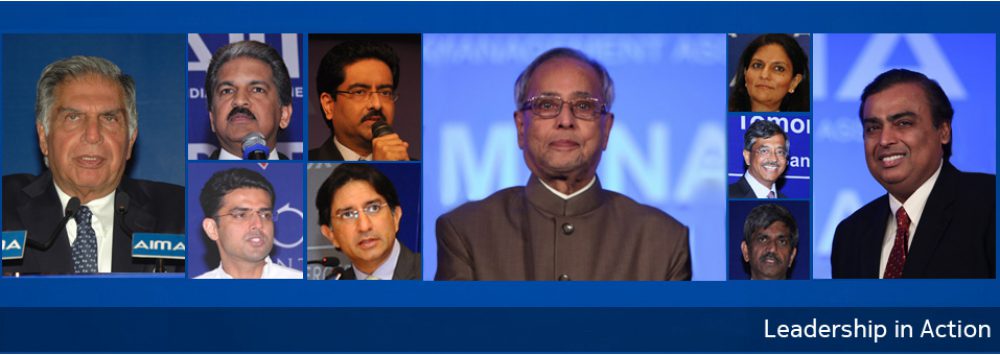To build a sustainable, competitive and resilient economy, India needs a new development model- a green frontier development model, that’ll take India on a Net Zero trajectory, said Jayant Sinha, Hon’ble Chairperson of the Parliamentary Standing Committee on Finance and Member of Parliament (Lok Sabha) at AIMA’s 53rd LeaderSpeak Session
It has become difficult to ignore the harmful changes in our planet’s life-supporting ecosystem because of humanity’s accelerated consumption of nature. The biggest source of climate change is the excessive burning of fossil fuels to fire up the engines of economic growth. The West can be accused of the hypocrisy of teaching about conservation after taking advantage of the planet’s bounty, but we can’t ignore the fact that humanity will suffer if the earth’s environment heats up further.
Keeping that in mind, India should find less polluting ways to increase income and consumption. It can use the climate crisis to its advantage by becoming a leader in new technologies of energy, manufacturing and transportation, and Indian companies should work on energy and material innovations.
The green economy is going to be as important as digital technology is today. India must back itself in the race to a green future. Being a global strategy expert, philanthropy strategist, and successful politician, Jayant Sinha rightfully addressed AIMA’s LeaderSpeak session on how India can be Net Positive from Net Zero.
India’s commitment to Net Zero is a must but how can it become Net positive, and especially what can private companies do for the cause? Jayant Sinha began his deliberation by saying that this is a cause everyone has to be involved in keeping in mind our future generations. There is nothing more important than protecting the one planet that we have. He mentioned he had a long-standing interest in the subject, and to be a policy maker for the cause was made more helpful by the relevant technical knowledge and experience he had from both his academic and professional life.
He said that everything that we are doing today has to change if we have to get to Net Zero. Economists say that development has to be a farm-to-factory process. The whole idea of the factory is to produce more and technological tools make that possible for the people. The next step is increasing production through industrialisation and urbanisation.
The roadblocks that can be hit on this journey are- pandemics, climate change, water shortage, land scarcity, and air pollution. So, his view was that the farm-to-factory model was not sustainable, and India needs to be committed to bending the curve and getting to Net Zero by 2070, and to get there, the policies have to be changed dramatically.
The onus lies on companies to resort to the Net Zero model and also create jobs for job aspirants. Instead of creating brown jobs, they need to create green jobs. For example, a person working on a farm can be given a job to drive an electrical vehicle like Ola or Uber rather than an autorickshaw that works on CNG (Compressed Natural Gas).
This approach is called the “green frontier” that encapsulates- Net Zero emissions, high job creation, robust economic growth and sustainable urbanisation. Green technologies (renewables, biofuels, electric vehicles, battery storage, green hydrogen, recycling etc) are now becoming much more competitive than brown technologies (coal, petrol, diesel, inefficient material usage). The Net Zero pathway is a better development pathway as green technology is cost-effective and gives more output at a lower cost.
The private sector especially has to invest in the Net Zero model through a decarbonising approach. It is then that the economy will move towards the Green Frontier Economy too. As far as the capital is concerned, India has to invest 2-3 trillion dollars as incremental capital. It has to double the amount of Capex that it is putting in right now. As a result, the economy will grow and so will jobs and the GDP (Gross Domestic Product). On the societal front, cutting down carbon emissions means cutting down on air pollution and avoiding premature deaths.
He finally said, “An Atma Nirbhar Bharat is a Net Zero Bharat”. And the factors that go into making India a Net Zero Bharat are-Competitiveness, Sustainability and Resilience. To build a sustainable, competitive and resilient economy, India needs a new development model- a green frontier development model, that’ll take India on a Net Zero trajectory.
Watch the full session- https://www.youtube.com/watch?v=_J7ZPsRdVik&t=1s




